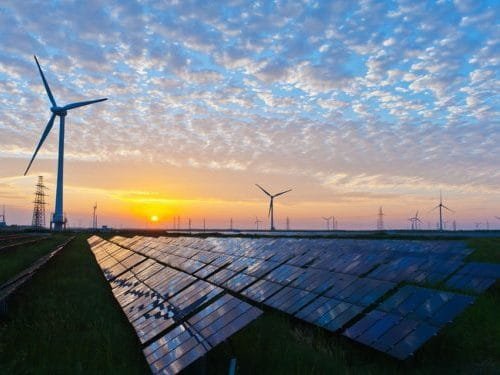- Renewable energy capacity is growing rapidly, with 29.1% of the world’s electricity generated by renewables in 2022.
- Climate impacts, such as extreme weather events and drought, affect the supply of and demand for renewable energy sources like solar, wind, hydropower, and biomass.
- Solutions for enhancing energy system resiliency include distributed and diversified energy systems, smart grids, making infrastructure more resilient, and better planning to address the impacts of climate change on renewable energy facilities.
“The world’s capacity to generate renewable electricity is expanding faster than at any time in the last three decades,” the International Energy Agency said in a report published earlier this year. This sign of growth offers “a real chance of achieving the goal of tripling global capacity by 2030 that governments set at the COP28 climate change conference.”
In 2022, 29.1% of the world’s electricity was generated by renewable energy resources, and in 2023, renewable capacity grew another 50%. That year, 21.4% of total U.S. energy was produced by renewables, and in April of this year alone, solar, wind, hydropower and biomass provided 31% of the nation’s electricity.
Because renewable energy sources depend on the environment, both the supply of and demand for renewables are affected by climate impacts such as high heat, drought, altered precipitation patterns, flooding, extreme weather and wildfires. Geothermal energy, which depends on heat from the Earth’s interior, is the renewable energy source least affected by climate change impacts, but it provides only 0.4% of U.S. electricity.
Read the full post at Columbia Climate School.





